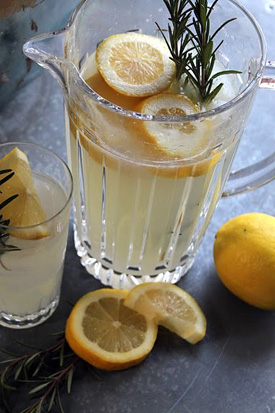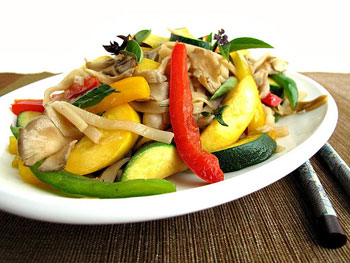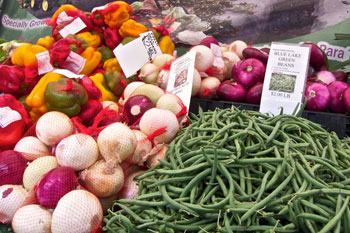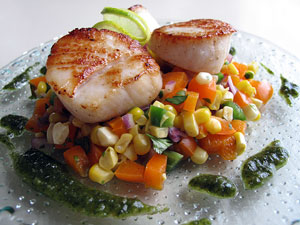 My house wine is sweat tea, but there are a couple concoctions I simply relish as much as tea. One is Mrs. Wilson’s Rosemary Lemonade and the other, a “James Farmer” – this Farmer’s version of an Arnold Palmer.
My house wine is sweat tea, but there are a couple concoctions I simply relish as much as tea. One is Mrs. Wilson’s Rosemary Lemonade and the other, a “James Farmer” – this Farmer’s version of an Arnold Palmer.
Dear friends of mine in Montgomery host me and “put me up” (or more so put up with me) when I’m staying in town for the night, and Mrs. Wilson, a fabulous cook and hostess in her own right, often makes a batch of this delicious drink. I cannot be more thrilled to partake.
I, as she has, have served this sweet, tangy, and savory blend to guests, family, and party attendees alike and it is always received with smiles and requests for more.
Mrs. Wilson serves hers from beautiful antique crockery pitchers, thus making it taste that much better, in my humble opinion. A farm girl originally from Opp, Alabama, Mrs. Wilson knows the importance of serving the best to friends and family.
Often times the best is just simple yet elegant creations direct from the garden and the land. Rosemary lemonade epitomizes this – fresh herbs from the garden, juice right from lemons, and simple syrup to bring it all together.
Mix this lemonade with my sweet tea, and you have one heck of an Arnold Palmer. Delicious and divine my friends, delicious and divine. Yea, though, as I mention an Arnold Palmer, this Farmer does have a version of the famed beverage… selfishly dubbed a “James Farmer.”
 Berries are fragile, which is why we love them so much off the bush or in a bowl But there are a couple of things to keep in mind once you decide to cook them, like in a pie.
Berries are fragile, which is why we love them so much off the bush or in a bowl But there are a couple of things to keep in mind once you decide to cook them, like in a pie.
 With summer drawing to a close, I'm still not ready to say goodbye. My garden, though less productive, has a lot of vegetables that are still ripening. But, alas, the cooler weather and shorter days will bring an end to summer's bounty. But with all the beautiful late summer produce that's currently available at farmers' markets, like squash, peppers, tomatoes, and more, there's a lot of summery cooking that can still be done.
With summer drawing to a close, I'm still not ready to say goodbye. My garden, though less productive, has a lot of vegetables that are still ripening. But, alas, the cooler weather and shorter days will bring an end to summer's bounty. But with all the beautiful late summer produce that's currently available at farmers' markets, like squash, peppers, tomatoes, and more, there's a lot of summery cooking that can still be done. Walk through any farmers market and the bounty of summer will be on display in mounds of freshly picked carrots, beets, lettuce, broccoli, cucumbers, peppers, onions, parsley, zucchini, corn, celery, green beans, tomatoes and spinach.
Walk through any farmers market and the bounty of summer will be on display in mounds of freshly picked carrots, beets, lettuce, broccoli, cucumbers, peppers, onions, parsley, zucchini, corn, celery, green beans, tomatoes and spinach. My house wine is sweat tea, but there are a couple concoctions I simply relish as much as tea. One is Mrs. Wilson’s Rosemary Lemonade and the other, a “James Farmer” – this Farmer’s version of an Arnold Palmer.
My house wine is sweat tea, but there are a couple concoctions I simply relish as much as tea. One is Mrs. Wilson’s Rosemary Lemonade and the other, a “James Farmer” – this Farmer’s version of an Arnold Palmer. Sweet, tender, mild, succulent, moist, and juicy. These are some words that describe one of my favorite seafoods, the scallop. I love the shape and design of their shells, which I collect, but I love the mild flavor of their meat even more. Part of the bivalve family of mollusks, these shelled creatures are prized for their tender, white meat. Harvested at sea usually by dredging the ocean floor or by diving, a more ecological method, scallops have their meat removed before arriving in markets. That is why you almost never see them in their shells.
Sweet, tender, mild, succulent, moist, and juicy. These are some words that describe one of my favorite seafoods, the scallop. I love the shape and design of their shells, which I collect, but I love the mild flavor of their meat even more. Part of the bivalve family of mollusks, these shelled creatures are prized for their tender, white meat. Harvested at sea usually by dredging the ocean floor or by diving, a more ecological method, scallops have their meat removed before arriving in markets. That is why you almost never see them in their shells.
